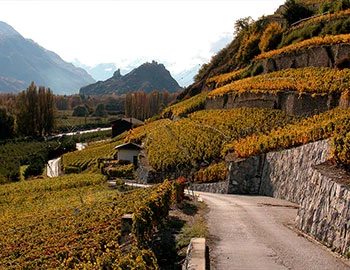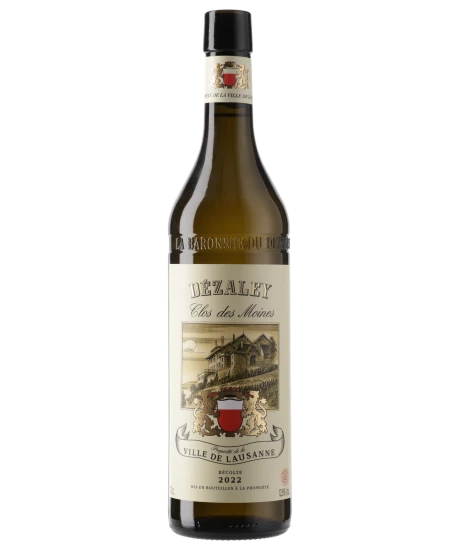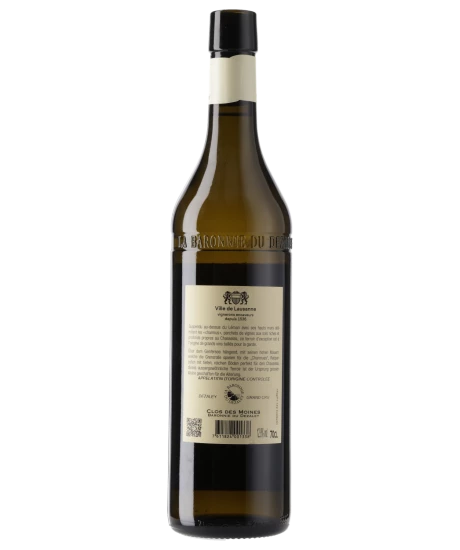Clos des Moines la Baronnie 2022
Clos des Moines la Baronnie 2022
AOC Waadt, Ville de Lausanne, 750 ml

The result of a new partnership
- A Chasselas from Ville de Lausanne in collaboration with the Baronnie du Dézaley.
- Lime blossom, pineapple, nut – creamy, mineral, typical Dézaley.
- Ideal with fish, mushrooms or cheese – with great ageing potential.
Description
The result of a new partnership
❯ The Ville de Lausanne recently became part of the Baronnie du Dézaley – a winegrowers' association that not only preaches quality, but lives it. 2022 brings the first wine from this new collaboration to the glass.
❯ The nose reveals a fine mix of lime blossom, a hint of pineapple and subtle nutty notes from the ageing in wood. Aromatic and creamy on the palate - with the typical mineral and long finish that makes Chasselas from Dézaley so distinctive.
❯ Enjoy it with whitefish fillets, egliknusperli, morel dishes or mature Gruyère. This wine has remarkable ageing potential – so why not keep a few bottles in the cellar?
Attributes
| Grape variety: | Chasselas |
| Producer: | Ville de Lausanne |
| Origin: | Switzerland / Waadt / Lavaux |
| Ripening potential: | 1 to 6 years |
| Drinking temperature: | 10 to 12 °C |
| Food Pairing: | Apéro pastries, Fresh water fish with cream sauce, Cheese board |
| Vinification: | pressed carefully and immediately, fermentation in steel tank, fermentation at low temperatures |
| Harvest: | hand-picking, strict selection |
| Maturation: | in large wooden barrel/foudre |
| Maturation duration: | 10 months |
| Volume: | 13.0 % |
| Note: | Contains sulphites |
Chasselas
Swiss pride
From cheerful drinking wine to the classy grand cru: the Chasselas is, with good reason, the flagship of Switzerland. It is extremely multifaceted. A young, apple and pear fruit specimen turns raclette into a feast. And a mature plant from the steep slopes of Lake Geneva, for instance from Lavaux, perfectly accompanies fish and seafood with its nut and flint notes. In its stronghold, the canton of Vaud, the Chasselas was once called Fendant. It has been known there for over 500 years. But at the beginning of the 20th century, vintners renamed it Chasselas, and from then on wrote the communities of origin on the label. Meanwhile, the grapes gathered such a reputation in neighbouring Valais as Fendant that most people today believe the name was invented there. The difference between the regions is that in Vaud the terroir expression of Chasselas is particularly noticeable. In Valais, conversely, the warm weather allows particularly round, fruity wines to develop. The Chasselas from Neuchâtel is not to be forgotten. A specialty there is the non-filtré, an unfiltered wine which is enjoyed in January as an early harbinger of spring.
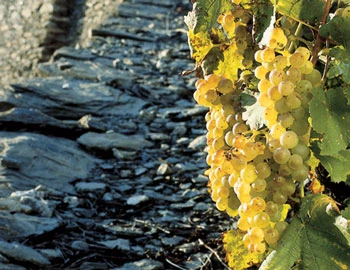
Lavaux
The Lavaux: In the stronghold of Chasselas
The Lavaux comprise 825 of the 3,800 total hectares in Vaud, and form the heart of viticulture in this wine-growing canton. In the sometimes spectacularly steep terraced vineyards, the Chasselas grape demonstrates that it can produce tightly structured crus shaped by the terroir. The wines from the 54-hectare grand cru site, Dézaley, have a legendary reputation. More delicate wines are produced in the western parts of the Lavaux (Lutry and Villette) and the eastern foothills (Montreux).
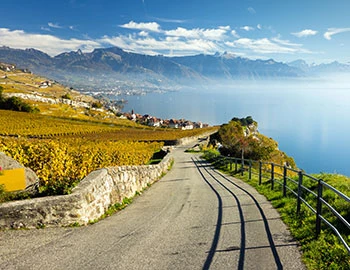
Waadt
Vaud: stronghold of the Chasselas
Vintners of Vaud have almost stubbornly maintained their loyalty to their preferred variety, Chasselas. This is now paying off, as white wines with moderate alcohol content are experiencing a renaissance. And vintners today interpret the lightness of Chasselas in their own individual ways. Over 100 chateaux produce wine here. By contrast, the wine villages fascinate with rural charm. It is these contrasts that make this winegrowing canton an exciting destination for wine tourism.
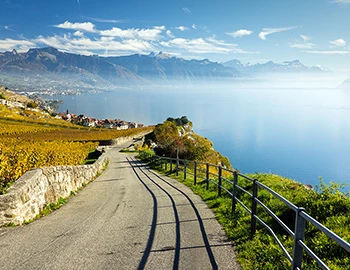
Switzerland
Switzerland – A small country with enormous diversity
Switzerland is famous for its banks, watches, and cheese, but not necessarily for its wine. The Swiss didn't invent wine, but they have been extremely open and curious to it. Wine culture arrived in what is now modern Switzerland via several routes: from Marseilles to Lake Geneva and the Lower Valais region; from the Aosta Valley through the Great St. Bernard Pass to the rest of Valais; from the Rhone through Burgundy, across the Jura Mountains to Lake Constance; and from Lombardy to Ticino, and then on to Grisons.
